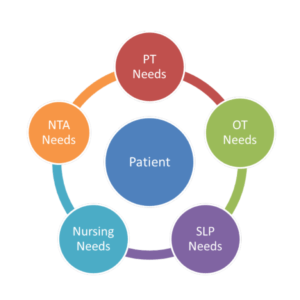3-day waiver rule on the way out?
The Centers for Medicare and Medicaid Services (CMS) is considering a new policy that could end the three-day hospital stay requirement for skilled nursing facility (SNF) admission, but the result could prevent some lower-rated facilities under the Nursing Home Compare five-star rating system from being sent referral patients by participating hospitals.
The initiative is contained in one of four models being tested by CMS, mirroring the agency’s application of the policy in its Bundled Payment for Care Improvement initiative and Accountable Care Organization programs.
While the American Health Care Association (AHCA) generally supports elimination of the rule, the organization said in a September 8, 2015 letter to CMS that tying the rule to five-star performance could cause inequities for many SNFs and cause serious inconveniences for many beneficiaries who, in many cases, would be unable to utilize facilities closest to their homes.
James Michel, senior director of Medicare research and reimbursement at AHCA, cautioned that the proposed policy would result in hospitals forming networks of SNFs with three stars or more, blocking out one- and two-star facilities from receiving patients. “The reality is that hospitals are not going to try to manage two different networks, so they are really just looking at three-, four- and five-star facilities,” he told Long-Term Living in an interview.
Rating system needs to be changed
In the letter to CMS, Michel said the agency should tie SNF performance to waiving the three-day stay requirement by using performance thresholds on SNF quality measures that are more directly applicable to post-acute care, such as hospital readmission rates, discharge to community rates, improved function and patient satisfaction rates. “Reliable and valid measures on SNF performance exist for all of these domains,” Michel wrote.
In addition, AHCA urged CMS to modify the proposed criteria of “at least three stars” to “at least three stars overall OR at least three stars on both the staffing and quality measure components.” That approach, AHCA contended, would create the incentive to achieve higher staffing levels and improved performance across the 11 quality measures in the five-star rating system.
The letter specifically focused on CMS’ proposed rule on the Comprehensive Care for Joint Replacement Model (CCJR). In that document, AHCA said:
- The five-star measures are not tailored to post-acute care and do not focus on elective lower-extremity joint replacement patients.
- The policy would have unintended negative consequences on a person’s freedom of choice of providers and access to care.
- The frequent fluctuation in a SNF’s overall rating above or below three stars will make program implementation difficult and could place beneficiaries in financial jeopardy.
The agency’s proposal “would make sense if it was an absolute rating system where everyone has a chance to get five stars, but that’s not the way it works,” Michel told Long-Term Living. “The reality is that there will always be one- and two-star facilities, regardless of how the whole system improves.”
The letter pointed out that the five-star rating system is principally based on measures that apply to long-stay nursing home residents rather than short-stay rehabilitation residents and noted that CMS currently is seeking comment on how to revise the requirements of participation to apply to short-stay residents. Of the 11 quality measures in the system, only three apply to short-stay residents. “Given the limited quality information about short-stay residents in [Nursing Home Compare], we do not believe the five-star system should be used as a quality gatekeeper to waving the three-day stay requirement,” Michel wrote.
Access to care
Regarding access to care, the AHCA letter contended that patients would no longer be able to select the most appropriate post-acute care setting based on all the information available to them, but instead would be forced to select only from SNFs based on CMS-imposed criteria. That could force beneficiaries to drive long distances to approved facilities.
“This is contrary to the language used on Nursing Home Compare to describe five-star ratings as one piece of information consumers should use when selecting a SNF,” Michel wrote.
Meanwhile, the possibilities for coverage gaps and complications could become a nightmare. Since SNF ratings fluctuate, beneficiaries could be placed in financial jeopardy, Michel told CMS. If a person is inadvertently admitted to a SNF whose rating was accepted by CMS in the near past but has now dropped below the three-star threshold, the person’s stay would not be covered.
Industry involvement
Michel also noted that CMS hasn’t yet addressed some of AHCA’s concerns, which were gathered a panel of technical experts on behalf of CMS. Nevertheless, it’s absolutely clear that if the industry, through its associations, does not speak up and express its views and concerns regarding agency policies, there is absolutely no chance those concerns will be addressed, he agreed.
During a conference call with healthcare reporters in mid January, Clifton J. Porter II, senior vice president, government relations at AHCA, described the association’s aggressive actions regarding proposed federal legislation and regulations over the past year.
“We’ve got to remain strong politically and engaged at the local level,” he said, noting that AHCA members conducted some 200 facility tours with members of Congress and staffers. “That is bearing fruit,” he said. “Members [of Congress] are now beginning to engage and ask us questions before decisions are being made versus after decisions are made.”
He pointed out that the observation stay battle will be a significant fight in 2016, something that is “incredibly important to beneficiaries.” He said AHCA will continue its efforts, while staying alert for additional regulatory efforts during the final year of the Obama presidency.
“We will have our eyeballs wide open,” he said. “We’ve got to make sure things get done right.”

Robert Gatty has more than 40 years of experience in journalism, politics and business communications and is the founder and president of G-Net Strategic Communications based in Myrtle Beach, South Carolina. He can be reached at bob@gattyedits.com.
Related Articles
Topics: Articles , Executive Leadership , Medicare/Medicaid , Regulatory Compliance









